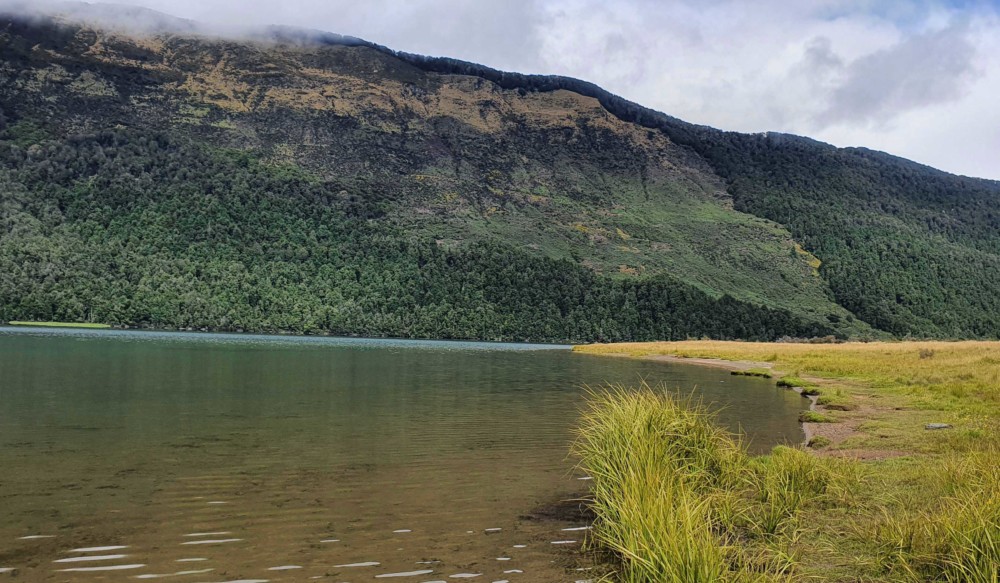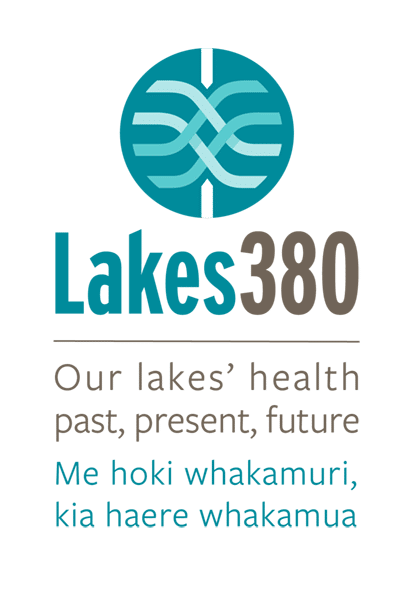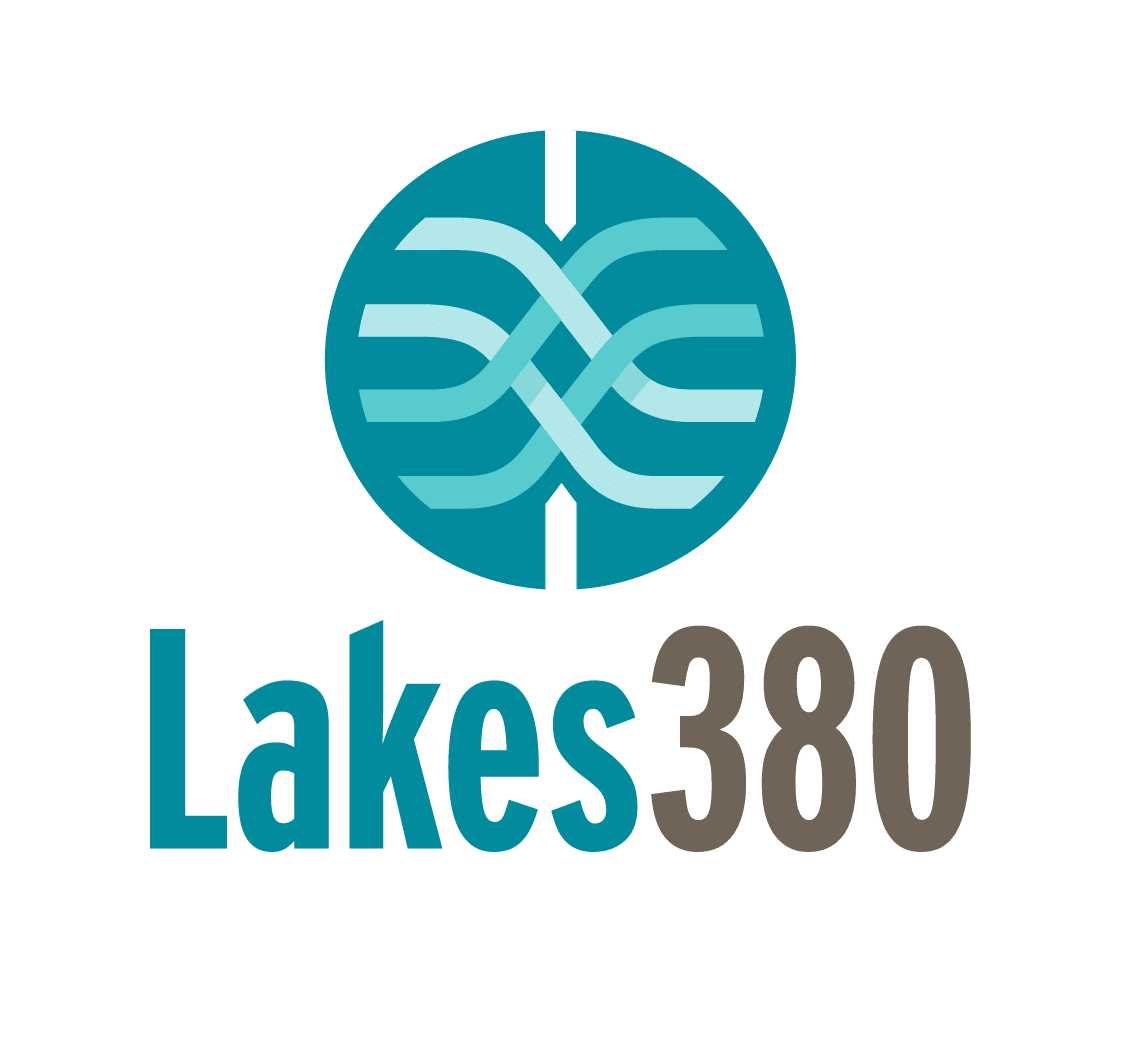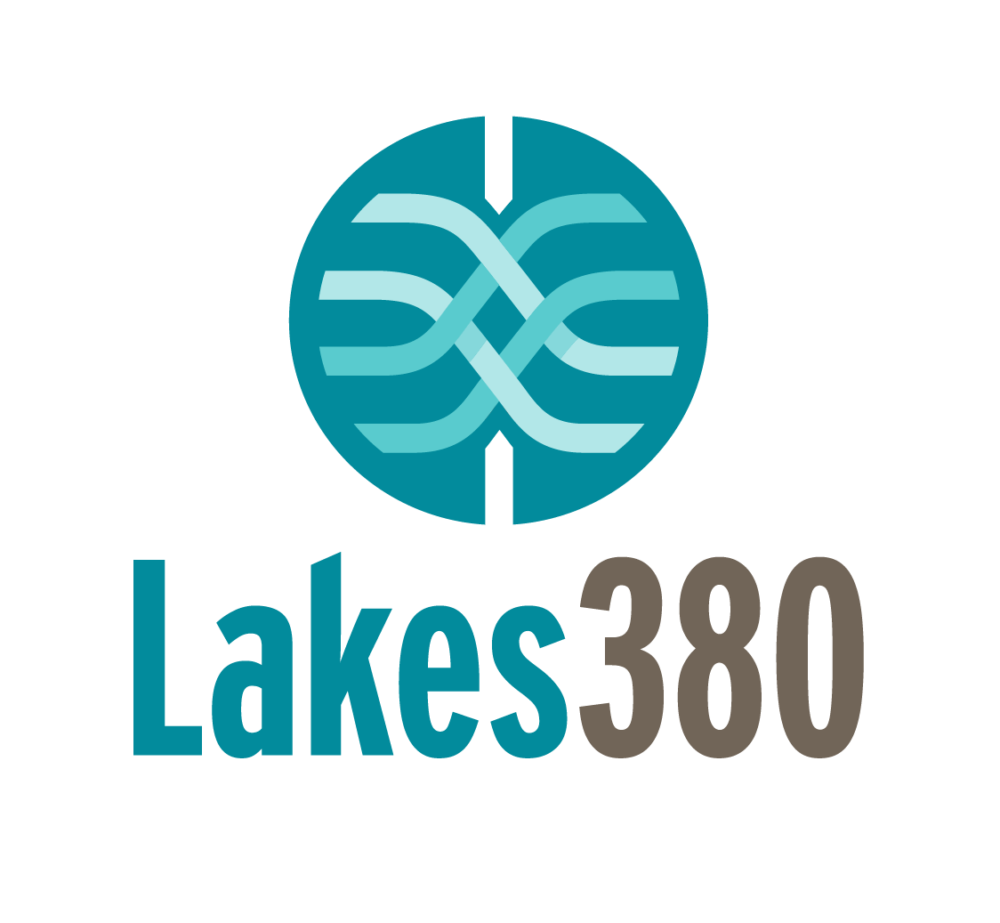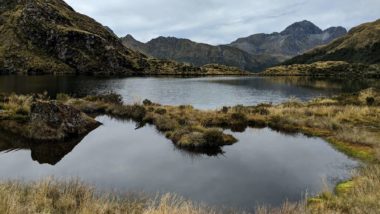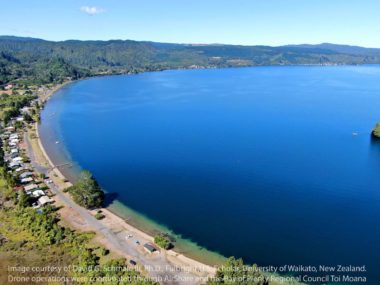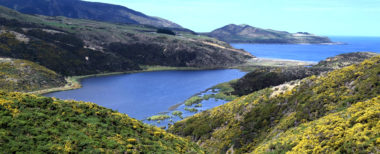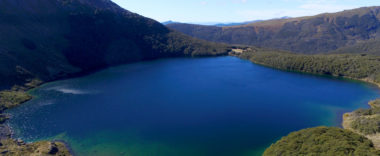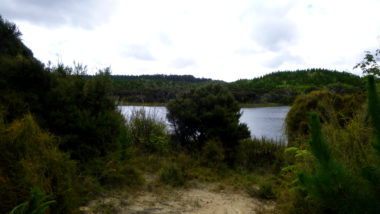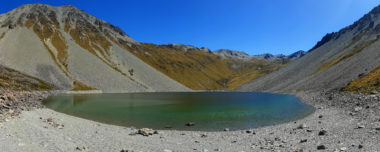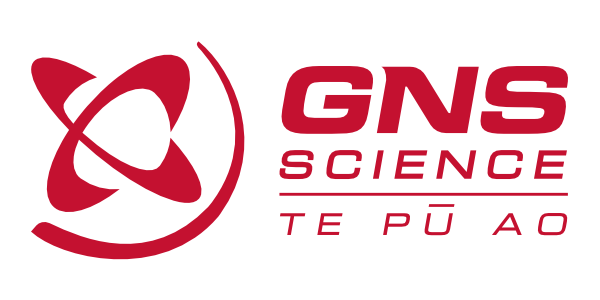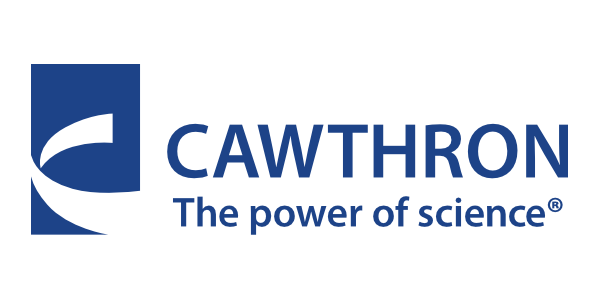Diamond Lake is nestled under the eastern flanks of Mt Alfred, some 17 miles north of Glenorchy, on the edge of Mt Aspiring National Park. Diamond Lake Wildlife Management Reserve was established in 1981 to recognise the area’s superb wildlife and fisheries values. The lake is a popular camping and fishing spot. The western shore of Diamond Lake is steep and bush-clad. The lake drains south along Diamond Creek to the Rees River, via the smaller Reid Lake.
